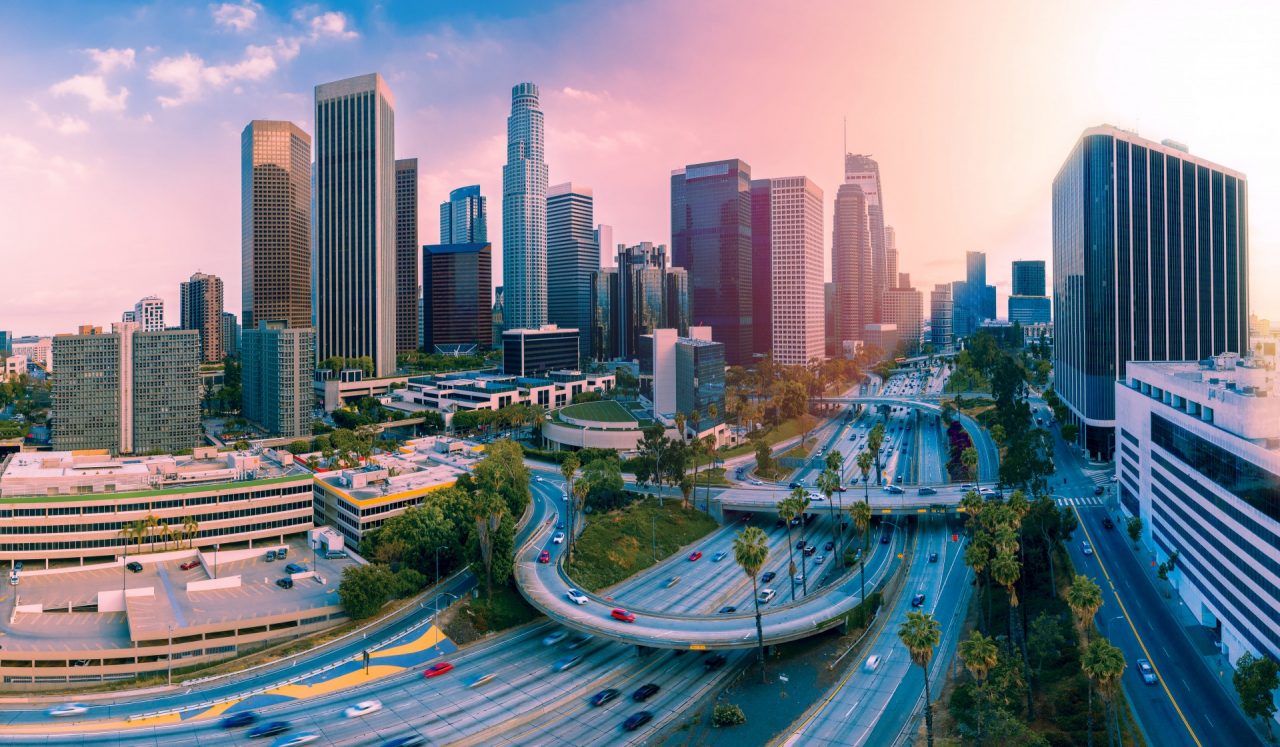Touching down at LAX, the Los Angeles International Airport, feels like navigating a shopping mall at the peak of the holiday season: packed terminals, bustling people, crowded stores. Until the arrival of Covid-19, that is: the Californian airport, which has an annual capacity of 100 million passengers, has suffered setbacks.
But outside the sprawling, hushed terminals, teams of workers continued to work on the LAX Automated People Mover, staying on track to inaugurate the new structure by 2023. The People Mover is a 2.25-mile (3.6-kilometre) rail line connecting the airport with key city transport hubs, helping to better bridge the gap between LAX, which is 26 miles (42 kilometres) south of downtown, and the greater Los Angeles area.
LAX Automated People Mover: a project even the pandemic couldn’t put on hold
The People Mover is an above-ground light railway that will transport thousands of people in and out of the airport. It will be comprised of six stations, three inside the Central Terminal Area and three outside.
After the project was approved in 2018, work began in 2019 and continued despite the forced closures of the pandemic.
The line will strategically and sustainably connect the airport to the city, reducing traffic and pollution. During peak hours, from 9am to 11pm, the People Mover will operate 9 trains, each with four cars.
Each train can carry up to 200 passengers at speeds of up to 47 mph (75 kmh). Trains will run every two minutes at all stations, and the entire journey from end to end will take just 10 minutes.
Once operational, the new People Mover will transport around 30 million passengers a year, about one third of all the people moving through LAX. It will also reduce daily road transport to and from the airport by an estimated 117,000 miles.

Sustainability and employment
Sustainability is a central theme of this project, part of a broader plan for the future development of Los Angeles. For years, LA has grown without much of a strategic plan, exacerbating traffic and pollution problems.
The LAX People Mover project has been designed to meet the most exacting standards of modern sustainability: the 44 cars are all electric, made with 98% recyclable materials, while the command center of the infrastructure is powered entirely by solar energy and designed to be LEED Gold Certified.
While the environmental impact will be well-contained, the Mover will make a significant mark on business and city development. Two thousand construction jobs will be created, 30% of which are reserved for residents of Los Angeles along with impacted communities near LAX. All are committed to the shared goal of completing the project on schedule, providing Los Angeles with a transport link to the Metro Green Line, as well as several bus lines.
A first step toward the airport of the future
The LAX Automated People Mover is an ideal infrastructure for a transportation hub of the Los Angeles airport’s scope. Prior to the reduction in operations due to Covid-19 which has affected air travel worldwide, the airport recently saw an increase in passengers.
This led Los Angeles World Airports, the city’s airport authority, to invest in development projects aimed primarily at improving airport access routes. To date, modernisation efforts involving LAX totaled $14 billion (€11.5 billion). In addition to the People Mover—the most significant of these efforts—the airport authority is also working on maintenance and expansion of the connectinng roads leading to each terminal, as well as upgrades to the terminals themselves.
These projects are not just about the future of LAX, but are part of an ambitious umbrella program: the 2020 Long Range Transportation Plan (LRTP).
In essence, the LRTP is a large city mobility plan involving the whole of Los Angeles and with a long-term scope, focusing on completing projects through 2050. It will take 30 years to properly invest the $400 billion (€329 billion) needed for 99 miles (159 kilometers) of new railways, metro lines in particular.
According to Los Angeles Metro, the authority overseeing the implementation of the local line, once the plan is complete, 21% of county residents and 36% of workplaces will be within a ten-minute walk of a metro or express bus stop, up from 8% (residents) and 16% (workplaces) at present.
This is the new sustainable mobility strategy Los Angeles is adopting. It should begin to take flight as early as 2023, when the LAX People Mover is inaugurated.

